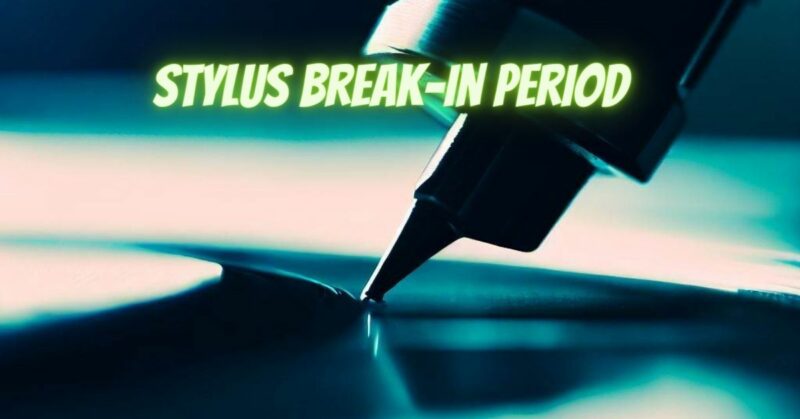In the intricate world of vinyl playback, every component plays a role in delivering the most faithful and captivating sound. The stylus, a tiny but crucial part of the turntable’s cartridge, also has its own journey of optimization. The concept of a “stylus break-in period” suggests that this delicate piece requires a certain amount of use to achieve its full potential. In this article, we delve into the idea of the stylus break-in period, examining its rationale, potential effects, and the considerations surrounding this phenomenon.
Decoding the Stylus Break-In Period
The stylus, often referred to as the needle, is the interface between your vinyl record and your audio system. The concept of a break-in period posits that the stylus undergoes changes in its shape, alignment, and contact with the record’s grooves during its early use. These changes, proponents argue, contribute to improved sound quality over time.
Reasons Behind the Break-In Period
Supporters of the stylus break-in period offer several reasons for its existence:
- Mechanical Adaptation: The stylus is made of delicate materials that might need time to adjust to the stresses of playback. This could result in subtle changes in alignment and contact with the grooves.
- Groove Smoothing: During the break-in period, the stylus might smooth out any microscopic irregularities in the groove walls, potentially leading to improved tracking and reduced surface noise.
- Optimal Lubrication: The process of repeated stylus movement might help distribute lubrication across the stylus tip, optimizing its interaction with the grooves.
Effects of the Break-In Period
The potential effects of the stylus break-in period can vary:
- Improved High-Frequency Response: Some listeners report that the high-frequency response becomes smoother and more detailed after the break-in period.
- Reduced Surface Noise: Groove smoothing and optimal lubrication might contribute to a reduction in surface noise, resulting in a cleaner sound.
- Enhanced Tracking: The stylus might adapt to the grooves during the break-in period, leading to more accurate tracking and less susceptibility to skips or distortion.
Considerations and Criticisms
While the idea of a stylus break-in period holds appeal for some audiophiles, others approach it with skepticism. Critics argue that the changes attributed to the break-in period might actually be due to other factors, such as listener adaptation, adjustments to the audio system, and psychological biases.
Practical Approach
If you’re intrigued by the concept of a stylus break-in period, consider these practical steps:
- Patient Listening: Pay attention to your turntable’s sound quality during the initial hours of stylus use. Document any perceived changes over time.
- Methodical Approach: Play a variety of records from different genres to gauge changes in sound quality more accurately.
- Equipment Stability: Ensure that your turntable’s other components, such as the cartridge and tonearm, are stable and correctly aligned. These factors also impact sound quality.
- Objective Listening: Use objective measurements, such as frequency response tests and tracking force adjustments, to assess any potential improvements.
The stylus break-in period adds another layer of intrigue to the vinyl listening experience. While the concept is debated among enthusiasts, taking a patient and methodical approach to evaluating its effects can provide valuable insights. Whether you’re a firm believer in the break-in period or remain skeptical, what truly matters is the enjoyment you derive from the music and the delicate nuances that vinyl playback brings to your ears.


